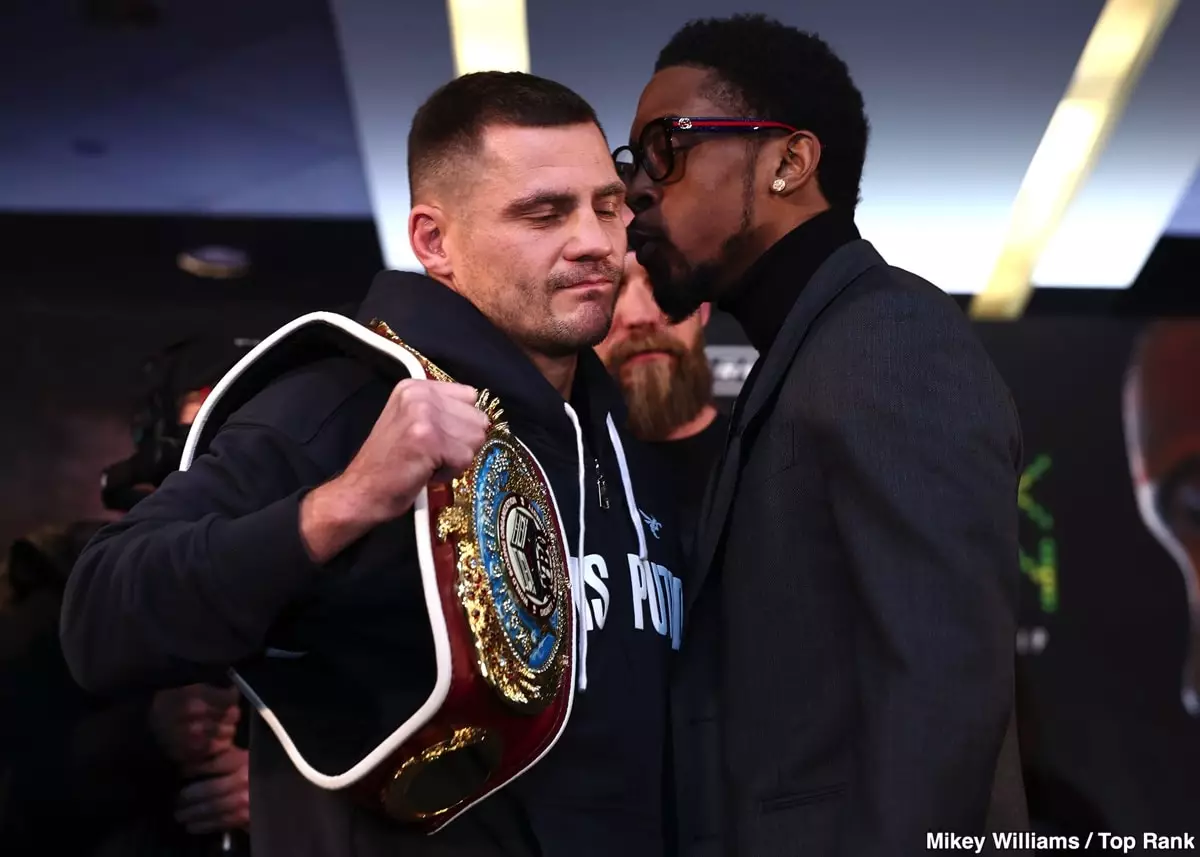The boxing world is ever-evolving and often fraught with controversy, as highlighted by a recent incident involving rising star Keyshawn Davis and WBO lightweight champion Denys Berinchyk. What seemed like a typical run-up to a major fight quickly morphed into a societal discussion about race, respect, and the ethics of sportsmanship. This article aims to critically analyze the dynamics at play in this incident, examining the responses from both fighters and their promotional company, Top Rank, while also considering the broader implications for the boxing community.
Ahead of Davis’s final press conference before his highly anticipated clash with Berinchyk, a box of watermelons and bananas mysteriously arrived for the fighter. Top Rank quickly took to social media to express their outrage, labeling the act as appalling and wholly unsuitable for a sports environment. They firmly supported Davis, emphasizing how such racially charged actions have no place in boxing or any other sport. However, the statement notably avoided addressing the implications of Davis accusing Berinchyk of orchestrating this act, which raises questions about accountability and the way we interpret actions and statements in the competitive sporting sphere.
It is essential to dissect the underlying motivations that could lead to such a public demolition of character. Davis’s assertion that Berinchyk was behind the delivery may have stemmed from frustration or insecurity, especially given the stakes involved in their impending fight. Still, it raises the question of whether athletes should be held accountable for comments that can perpetuate a cycle of negativity and division, particularly regarding race in today’s polarized society.
The silence from Top Rank regarding Davis’s strong accusations against Berinchyk may imply a double standard. If the roles had been reversed, one wonders whether the reaction would have differed significantly. Would Davis have similarly been vilified and not supported if he were publicly accused by Berinchyk of being a racist? It’s a hard question to answer, highlighting a troubling aspect of how the boxing world sometimes selectively applies its standards of justice.
Trainer Brian “BoMac” McIntyre’s comments on the fight strategy and Keyshawn’s capabilities are commendable yet also reflect a typical trainer’s bias towards their fighter. He reassures fans that Davis is prepared to take on the challenge, but his remarks about Davis’s readiness against more powerful opponents—the likes of Gervonta “Tank” Davis—have an undertone of skepticism. Is BoMac downplaying the potential risks involved, or is he genuinely confident in Davis’s skill set?
Davis’s performance, particularly against less formidable opponents, has raised eyebrows and left fans questioning his real competitiveness in the ring. It’s worth noting that a fighter’s perception and, ultimately, their marketability can be just as vital as their physical prowess within the ropes.
As fans witness a narrative steeped in racial tension unfold in the ring, it evokes broader questions about sportsmanship and respect. Incidents like these can detract from the pure competitive spirit that boxing embodies. Instead of focusing solely on the upcoming clash, discussions of race and accusations of bigotry can overshadow the nuanced and skillful aspects of the sport.
Given that boxing has long been a microcosm of societal norms, it’s imperative for both athletes and organizations to strive for a higher ethical standard while also setting the right example for the next generation of fighters. Promoters, coaches, and fighters alike should foster an environment where respect and integrity reign supreme, ensuring that performance in the ring does not get lost amidst external distractions and conflicts.
Ultimately, the incident surrounding Keyshawn Davis and Denys Berinchyk urges a reevaluation of how we engage with issues of race and personal accusations in the sport of boxing. We must ask ourselves whether these types of allegations contribute positively to the narrative that surrounds the sport or if they merely serve to create division. As this story continues to develop leading to the fight, it presents an essential case study in the balance between competition, respect, and the responsibilities that come with being in the public eye. The boxing community will be watching, not just for the results of the bout, but for how they choose to respond to this contentious situation.

